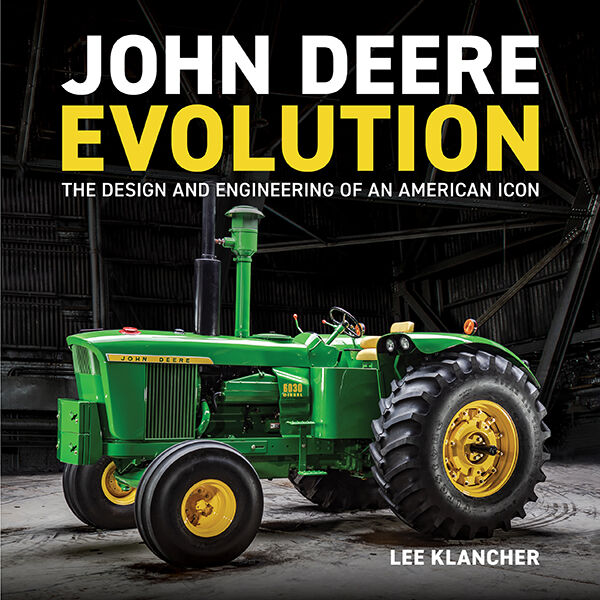Fans of John Deere tractors will find “John Deere Evolution: The Design and Engineering of an American Icon” to be a special treat.
Lee Klancher’s book is filled with great research, photographs and nuggets that show how time changed the way farmers work their land.
One treat was he called upon engineers to write short stories about what challenges they faced. Those snippets readers should find fascinating.
Klancher explains the growing years of the Moline, Illinois-based company that is the world’s largest agricultural company. Unlike other competitors Deere struggled at the beginning of the 20th century because ironically it had a reluctance to get involved with the manufacturer of farm tractors, and, of course, since the 1960s Deere has been No. 1 in the United States. Klancher’s book has several chapters dedicated to combines but the main focus is on tractors of all sizes.
“John Deere Evolution: The Design and Engineering of an American Icon” provided a view that many Deere insiders knew about the company’s transformation and noted its commitment to keeping a strong balance sheet and investing heavily into research and development.
Klancher points out the importance of dealers and field representatives for getting feedback from farmers on how to make the product better.
Fascinating stories involved the reluctance to go away from a successful staple—the two-cylinder motor—but that all changed in 1960 with the introduction of new engines to power the New Generation tractors led by 1010s, 2010s, 3010s and 4010s that pushed Deere to No. 1 in a short period of time. Industry executives wanted to transform the series to be versatile and comfortable compared to predecessors. Many great nuggets are included about the 20 series and a change in cabs that became a part of the 30 series.
He also points out the work by William “Bill” Hewitt in 1955, who led the company until 1982. Hewitt was committed to innovation and from the top he led the company’s drive to become the dominant manufacturer in agriculture.
Interesting side stories noted the commitment to polished design. One of those was about Henry Dreyfuss, who led the drive to take the company’s design to a new level. Although he died in 1972, his design influence is carried into today.
The book also chronicled design problems that sometimes required outside influences. Jon Kinzenbaw, an Iowa farm boy, helped farmers who faced mechanical problems. Kinzenbaw later founded Kinze Manufacturing, a specialty equipment manufacturer known by farmers for its planters, grain carts and tillage equipment.
Also, stories of the struggles of getting their feet entrenched in the articulated four-wheel drive tractors market were explained well. Deere identified in those years, particularly coming out of the 1950s, that a growing numbers of farmers needed large tractors to work many acres with minimal labor available.
“John Deere Evolution: The Design and Engineering of an American Icon” also notes how the farm crisis of the 1980s impacted the company and the entire industry.
The book finishes with how the refinement of Deere tractors continues today and how as today’s buyers continue to seek maximum horsepower while being fuel efficient they also want their tractor cab to operate like an office. Deere has no plans to give up being up No. 1 and Klancher’s book artfully describes why the company is an agricultural icon.
Dave Bergmeier can be reached at 620-227-1822 or [email protected].




